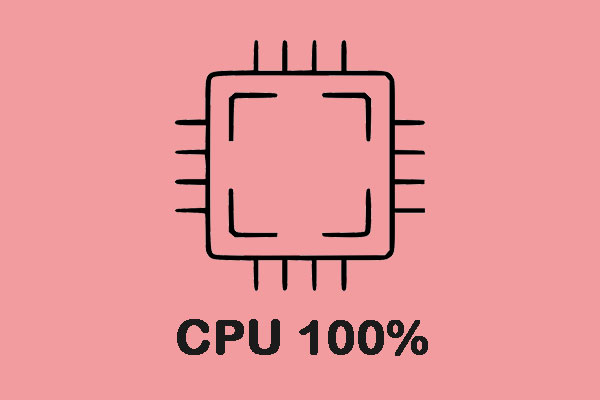If you are interested in the static random-access memory, then you are in the right place. This post from MiniTool has gathered much information about it, including its usage, types as well as states.
There are a number of storage devices that you can use on your computer, such as jump drive and SSD. Now this post from MiniTool will introduce SRAM memory to you.
Overview of SRAM Memory
First of all, what is SRAM memory? It is the abbreviation of static random-access memory, which is a type of semiconductor random-access memory. It stores each bit by adopting bistable latching circuitry (flip-flop).
SRAM possesses data remanence, but in the traditional sense, it is still volatile. When the memory is not powered on, the data will eventually be lost.
SRAM memory is different from DRAM memory because DRAM has to be periodically refreshed. SRAM is faster and more expensive than DRAM. It is usually used for the CPU cache, and DRAM is used for the computer’s main memory.
There are some advantages and disadvantages of SRAM memory, which have been listed below:
- Advantages: simplicity (without performing a refresh circuit), performance, reliability, low idle power consumption.
- Disadvantages: price, density, high operational power consumption.
The power consumption of SRAM varies greatly based on the access frequency. In some cases, it can consume as much power as dynamic RAM when used at high frequencies, and some ICs can use many watts at full bandwidth.
On the other hand, SRAM used at a slightly slower speed, such as in applications with moderately clocked microprocessors, consumes very little power and consumes almost negligible power at idle-around a few microwatts. Several techniques have been proposed to manage the power consumption of SRAM-based memory structures.
Uses of SRAM Memory
SRAM memory can be used in many different places, and this part will tell you the uses of SRAM memory.
Contemporary SRAM Devices
You can find SRAM on general purpose products and chips.
General Purpose Products
- With an asynchronous interface.
- With a synchronous interface.
Integrated on Chip
- As RAM or cache in microcontrollers (usually from 32 bytes to 128 KB).
- As the main cache in powerful microprocessors (from 8 KB to several megabytes).
- To store registers and parts of the state-machines used in some microprocessors (see register file).
- On a dedicated IC or ASIC (usually in the order of kilobytes).
- In Field Programmable Gate Array and Complex Programmable Logic Device.
Embedded Use
You can find static RAM in many categories of industrial and scientific subsystems, automotive electronics and similar products. Almost all modern devices, toys and so on that implement electronic user interfaces also embed a certain amount of data (kilobytes or less). Gigabytes can be used for complex products such as digital cameras, mobile phones, synthesizers, etc.
Dual-port SRAM is sometimes used in real-time digital signal processing circuits.
In Computers
SRAM is also used in personal computers, workstations, routers, and peripherals: CPU register files, internal CPU caches, and external burst mode SRAM caches, hard disk buffers, router buffers, etc. LCD screens and printers also typically hold the image displayed (or to be printed) by using static RAM. Some early personal computers (such as ZX80, TRS-80 Model 100, and Commodore VIC-20) used SRAM memory as the main memory.
Hobbyists
Due to the easy of interfacing, hobbyists, especially home-built processor enthusiasts, usually prefer SRAM. Compared to DRAM, it is easier to use because there are no refresh cycles and the address and data buses are directly accessible. In addition to buses and power connections, SRAM typically requires only three controls: Chip Enable (CE), Write Enable (WE) and Output Enable (OE). In synchronous SRAM, Clock (CLK) is also included.
Types of SRAM Memory
Non-Volatile SRAM (NV-SRAM)
Non-volatile SRAM (nvSRAM) possesses standard SRAM functionality, but save data when power is off, thereby ensuring the preservation of critical information. nvSRAM is widely used in many occasions such as networking, aerospace and medical, where the preservation of data is very important and where the battery is impractical.
Pseudo SRAM (PSRAM)
PSRAM features a DRAM memory core and incorporates a self-refresh circuit. They appear externally as a slower SRAM. Compared to true SRAM, they have density/cost advantages without the access complexity of DRAM.
By Transistor Type
- Bipolar junction transistors (for TTL and ECL) – very quick but uses a lot of power.
- MOSFET (used in CMOS) – low power consumption and very ubiquitous today.
By Function
- Asynchronous – independent of clock frequency; data input and output are controlled by address translation.
- Synchronization – all timing is initiated by a clock edge. Addresses, data inputs, and other control signals are related to the clock signals.
By Feature
- Zero bus turnaround (ZBT)
- syncBurst (syncBurst SRAM or synchronous-burst SRAM)
- DDR SRAM
- Quad Data Rate SRAM
By Flip-Flop Type
- Binary SRAM
- Ternary SRAM
States of SRAM
SRAM cells have three different states: standby (the circuit is in idle state), read (data requested) or write (update content). SRAM operating in read mode and write mode should have “readability” and “write stability”, respectively.
